#felis lybica
Explore tagged Tumblr posts
Text

Southern African Wildcat | Richard Jessnitz
#photo#felidae#felinae#felis#felis lybica#felis lybica cafra#african wildcat#southern african wildcat#juvenile
258 notes
·
View notes
Text

An African wildcat (Felis lybica) relaxes in a tree in Kgalagadi Transfrontier Park, South Africa
by jaffles
#african wildcat#wildcats#felines#felis lybica#felis#felidae#carnivora#mammalia#chordata#wildlife: africa#wildlife: south africa
1K notes
·
View notes
Text















Some of my favourites from Inktober 2023. I decided to draw 1 cat species per day, in a couple of different styles. You can find all of them under the Inktober tag!
#inktober 2023#inktober#felidae#felis margarita#otocolobus manul#leopardus geoffroyi#felis chaus#prionailurus viverrinus#prionailurus planiceps#leopardus braccatus#prionailurus rubiginosus#caracal caracal#lynx canadensis#neofelis nebulosa#leopardus guigna#leptailurus serval#pathera tigris#felis lybica
8 notes
·
View notes
Text
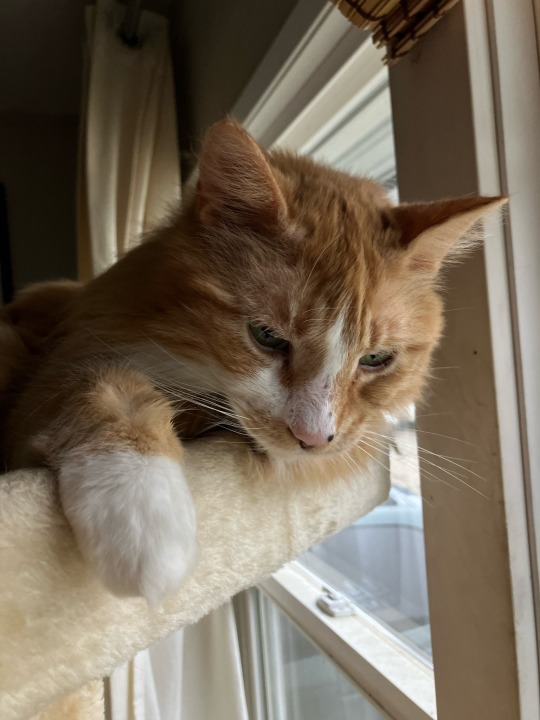
Despite being still fairly feral at thirteen years strong, my boy Casper the orange tabby floof displays multiple traits of domestication: bold white markings, long exquisitely soft hair, and an orange coat which would only ever rarely ever occur in the wild. Also, allergies.
There Was Another Domestic Cat!
I hate that I'm only now in 2024 learning about this rad 2016 cat science find (frustrating that it wasn't more publicized,); there's evidence in China that there was once a second species of domestic cat, Prionailurus bengalensis, or the Asian Leopard Cat. Fellow cat nerds will recognize that this is the same wild species that was hybridized with the domestic cat to produce the famously active and beautiful breed known as the bengal cat, however these ancient domestic cats evidenced in the study share no relation to the modern bengal. Modern domestic cats notably descend from the African wildcat (Felis silvestris lybica.)
The evidence of the domesticated version of the Asian Leopard cat is primarily wear patterns on teeth still connected to jaw bones found in China which do not show up in fully wild kitties. This basically means that these domestic cats were eating a diet which their wild brethren do not consume.
To me, the idea of a second ancient species of domestic cat is extremely intriguing and I will most definitely need to draw a concept if what these cats would have looked like with the calling card bold white markings and other domestic traits which inevitably appear in domesticated animals, as shown in the Russian Silver Fox Project which eventually produced completely domesticated foxes. It would also be very interesting scientifically to see the full ancient domestication of the Asian Leopard Cat reproduced although with thousands of modern domestic kitties in need of homes this experiment is likely never going to happen (which is for the better with so many far more suitable modern purr machines available for adoption.)
Domestication of modern domestic cats (Felis silvestris catus/Felis catus) likely took place on the Mediterranean island of Cyprus some 10,800 years ago with the cats quickly spreading to Egypt and China where they became beloved fixtures of temples, homes and palaces. Today thanks to artificial selection these kitties exist in miriad beautiful breeds and coat patterns but more importantly, modern kitties are noble, affectionate, and extremely social companions of the educated, responsible human household.
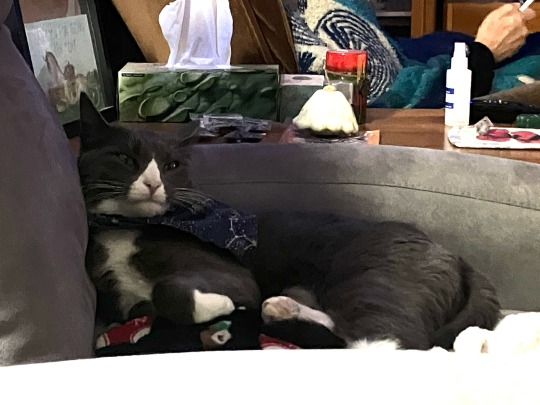
My three year old blue tuxedo cat Keplar, who spends his days playing, following me around everywhere that he can (getting very frustrated when he cannot,) chatting with me, and snuggling with his thirteen year old unrelated fluffy orange tabby brother, Casper. With a dilute gene turningwhat would've been a melanistic coat grey and bold white markings which are found only in domesticated animals, Keplar is an excellent representative of the modern domestic cat.
#cats#cats of tumblr#kitties#domestic cat#house cat#cat#cat news#cat science#asian leopard cat#bengal cat#african wildcat#archaeology#Chinese archaeology#Prionailurus bengalensis#Felis silvestris lybica
21 notes
·
View notes
Text
Ancient Egyptians may have given cats the personality to conquer the world
Civilization of the pharaohs may have turbocharged domestication
19 JUN 2017
BY DAVID GRIMM

A cat in a domestic setting—eating under a dining table—sometime after 1500 B.C.E. ASHMOLEAN MUSEUM, UNIVERSITY OF OXFORD/BRIDGEMAN IMAGES
In 2007, other researchers had analyzed the DNA of modern cats to show that all living domestic cats trace their ancestry to the Near Eastern wildcat (Felis silvestris lybica)—a small, sandy-colored feline that looks like a Mackerel tabby. This subspecies contains felines with five unique genetic signatures in their mitochondrial DNA. …
The world's first cats all appear to sport the same lybica subtype, mitochondrial type A. This genetic signature pops up at least 9000 years ago in what is now Turkey, the team reports today in Nature Ecology & Evolution. Archaeologists think that, perhaps about 10,000 years ago, wildcats in this region—with a southern coast just a few dozen kilometers from Cyprus—slunk into early farming villages to hunt rodents and eventually self-domesticated into modern cats. By 6500 years ago, these type A cats began appearing in southeastern Europe, the team found, possibly following migrating farmers. After that, cats infiltrated the rest of Europe, Africa, and Asia.
But that's only half the story. Most of the Egyptian cat mummies sport a different lybica subtype, type C, which first appears in the team's samples around 800 B.C.E. (It's possible that the type C cat could have been living in Egypt much earlier—the early graveyard study didn't yield any usable DNA.) Cats with this genetic signature appear to have been incredibly popular: By the fifth century C.E., they spread through Europe and the Mediterranean. And during the first millennium C.E., they came to outnumber type A cats two to one in places like western Turkey.
The ancient Egyptians may have been responsible for this popularity. "The Egyptians were the first people to have the resources to do everything bigger and better," says Carlos Driscoll, the World Wildlife Fund chair in conservation genetics at the Wildlife Institute of India in Dehradun, who led the 2007 study. That ability may have extended to breeding cats. As the Egyptians bred more and more felines, Driscoll speculates, they would have selected for the ones that were easiest to have around—more social and less territorial than their predecessors. "They turbocharged the tameness process."
Egypt's art reflects this dramatic transformation. The earliest representations of cats depict a working animal, like the rat hunter in the limestone tomb. But over the centuries the felines begin to appear in more domestic contexts, hunting birds with people, wearing collars, and—by 1500 B.C.E.—sitting under chairs at the dinner table. "They go from being a slaughterer of mice to a couch potato," says Eva Maria-Geigl, an evolutionary geneticist who oversaw the study with molecular biologist Thierry Grange, both at the Jacques Monod Institute in Paris.
6 notes
·
View notes
Text

African Wildcat (Felis lybica), family Felidae, Kgalagadi Transfrontier Park, South Africa
photograph by David Cox
754 notes
·
View notes
Text
Scottish Wildcats from British wildlife centre







These are last years adolescents, hard to take good photos with the bars in the way. They came out for a feeding/talk. They were eating chicken chicks. There was four in one enclosure.





There were younger kittens in an adjacent enclosure. one kitten was brave enough to approach an adolescent close to the bars. The kittens came out after the feeding talk. the bars were at a bad angle and appear harsher in the photos.
Overall I was super happy to see living Scottish wildcats (I had seen many taxidermy specimens). it had been my dream for a long time. The photos aren't terrible and I saw kittens!!! I was interested to hear they can take down Muntjacs (one was recorded to take down a roe deer). These are not what Domestic cats are descended from (that is the African wildcat, Felis lybica). But they did remind me of little tabby cats and can hybridise. They used to native to all of the British isles. But now have small strongholds in Scotland. The kittens from here are released in programs when they are old enough. They are critically endangered. Threatened by hybridisation with free roaming domestics, habitat loss and were once prosecuted.
@mekanikaltrifle @robotslenderman @amber-tortoiseshell @lepurcinus @felinefractious finally got round to uploading my camera photos of the Scottish wildcats! not the best photos due to bars but I'm happy. also kittens!!!!
#cat#scottish wildcat#scottish wildcat kittens#wildcat#wild cat kittens#wild cat#wildcat kittens#british wildlife#zoo#my photos
102 notes
·
View notes
Text
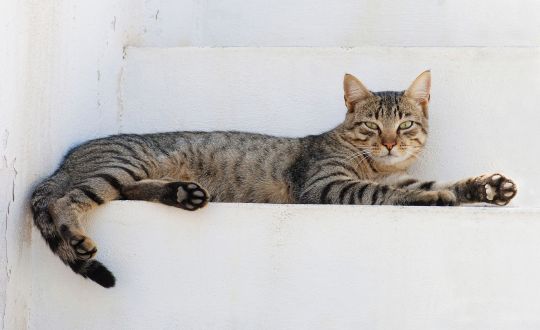
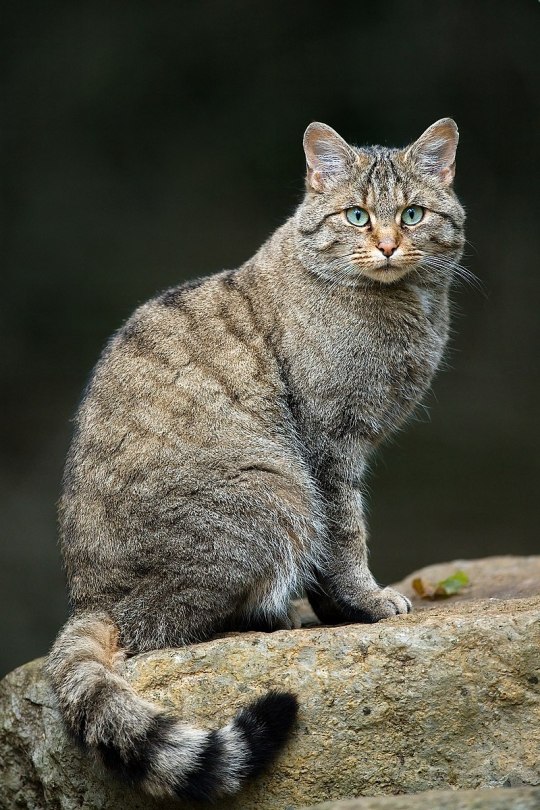

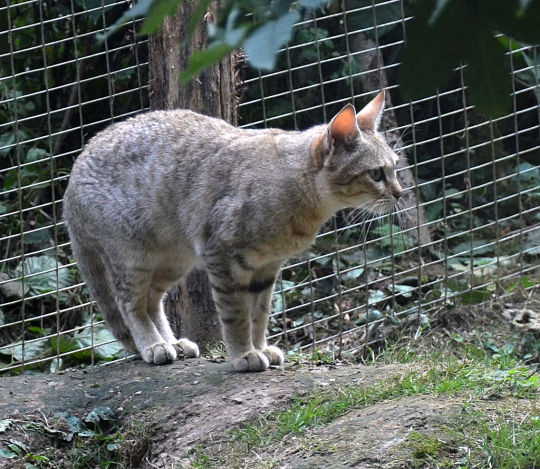
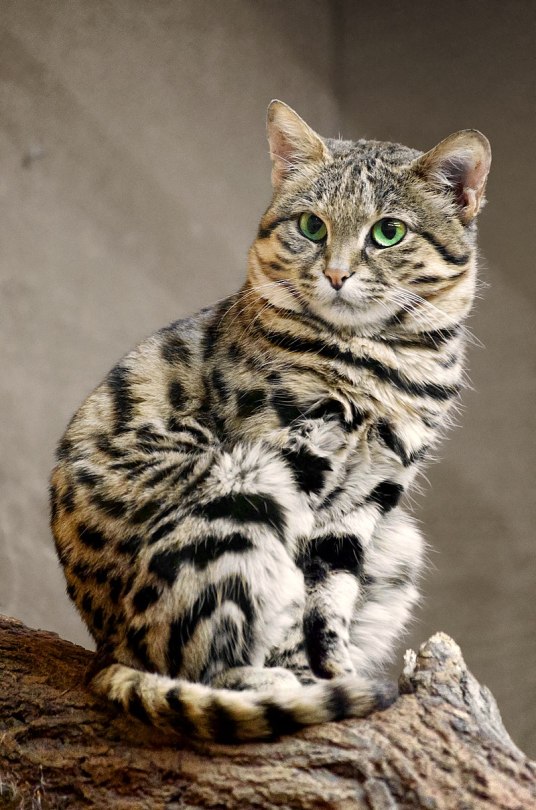
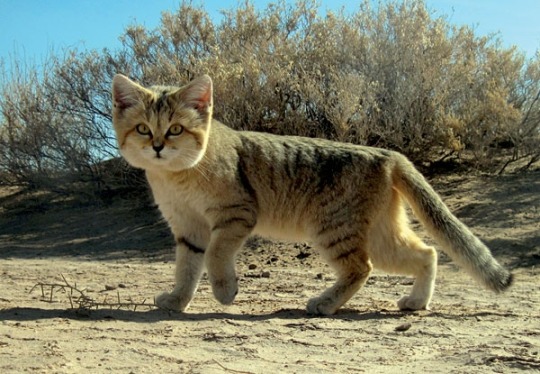
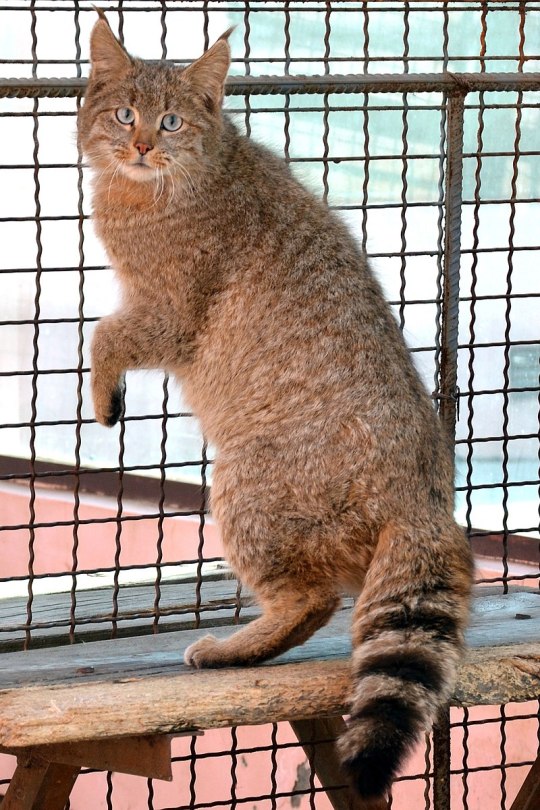
#poll#random poll#fun polls#poll time#my polls#tumblr polls#random polls#polls#fandom polls#tumblr poll#polls on tumblr#polls polls polls#polls are fun#cat#cats#kitties#kittens#cute animals#kitty#cute cats#animals#kitty cat#kittyposting#cute kitty#feline#animal#felidae#felinae#mammalia#carnivora
38 notes
·
View notes
Text

These felines are known to locals as "cat-foxes," and wildlife rangers in Corsica think that they might be a new, undocumented species, according to the Agence France-Presse (AFP).
These cat-foxes earned their name because of their size (slightly larger than an average domestic cat) and their tail decorations — most of them have two to four rings on their tails that end in a black tip. The cats are about 35 inches (90 centimeters) long from head to tail; they have wide ears, short whiskers and dog-like teeth, according to the AFP…
…Researchers at the National Hunting and Wildlife Office in Corsica have been examining these cats for over a decade. Back in 2012, they examined fur left behind when the cat-foxes rubbed their bodies on a stick that had been coated with an attractive scent. When the researchers examined the DNA from that fur, they found these cat-foxes weren't related to any known species around the world, but their DNA was similar to that of the African forest cat (Felis silvestris lybica).
(article from 2019)
8 notes
·
View notes
Text


Southern African Wildcat | Ingmar Van der Brugge
#photo#felidae#felinae#felis#felis lybica#felis lybica cafra#african wildcat#southern african wildcat#juvenile#parental care
116 notes
·
View notes
Text

Felis lybica. Struik Pocket Guides for South Africa: Mammals. Written by John Skinner. Illustrated by Penny Meakin. 1988.
Internet Archive
177 notes
·
View notes
Text

Inktober day 17 - African wildcat, the ancestor of our domestic cat
This year I'm drawing wild cat species for Inktober. Which one would you like to see?
9 notes
·
View notes
Text

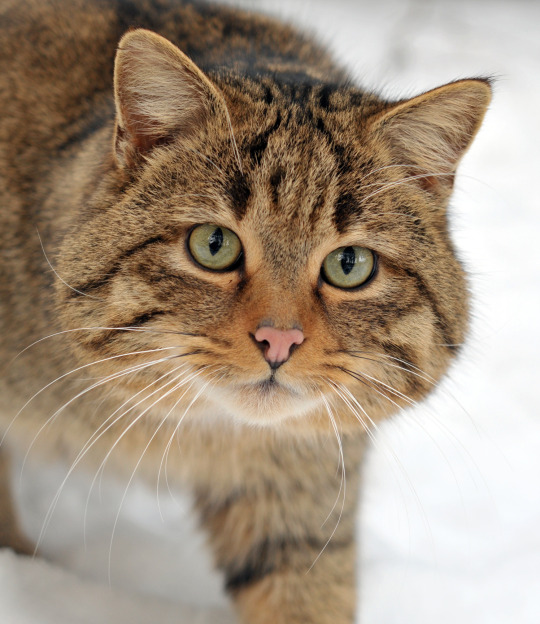
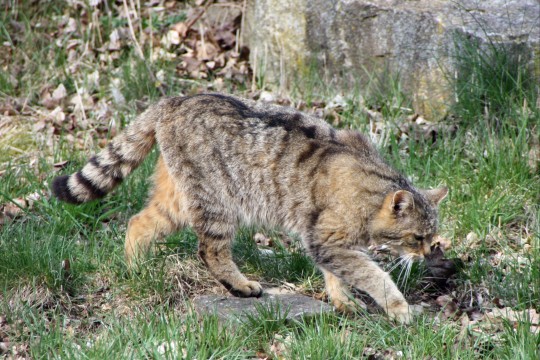


The European Wild Cat (Felis sylvestris sylvestris) is a small feline species currently re-populating vast areas of Germany. Its population is distributed over large areas of Southern and Central Europe from the far west to Ukraine and the Caucasus. It is absent in Northern Europe. After a dramatic drop of the population in the late 19th and early 20th century, which led to a complete disappearance in many regions and entire countries, the population and inhabited areas are constantly expanding again. Today's population is probably vastly underestimated due to the elusive lifestyle. New finds in an area are often made by chance on camera traps. The species has reappeared in Switzerland and Austria in the recent years and is reclaiming forests in Southern and Central Germany. The sharp decline in population was formerly attributed to intense hunting, but paleo-veterinarian investigations found evidence for an epidemic event as the likely cause.
In Germany, the cat prefers to live in large forests with little disturbances. This has led to the assessment that an undisturbed and unmanaged forest with the general absence of humans is required as a habitat for these cats. However, this assessment has come under debate as in Southern Europe, the European Wild Cat lives in more densely populated areas in close proximity to settlements. Camera traps in Germany have shown European Wild Cats living in relative proximity to human settlements. In addition, contrary to former belief, the existence of wide roads is not a major obstacle for the migration and the re-population of habitats. Nevertheless, Germany with its large forested areas provides ideal habitat for the European Wild Cat.
The European Wild Cat is similar in appearance to the common domestic cat, but its body is bigger, more massive, with taller legs and a head that accommodates a bigger brain. In contrast to the domestic cat, the European Wild Cat is regarded as being indomitable.
The status of The European Wild Cat and the domestic cat as two separate species (Felis silvestris and Felis catus, respectively – Felis catus originating fro Felis lybica, the African Wildcat) as defined by IUCN is debated among zoologists, as individuals of both taxonomical units can have viable and fertile offspring, which is usually results in assigning them as subspecies of the same species (Felis sylvestris sylvestris and Felis sylvestris lybica, respectively). Hybrids of Felis sylvestris and Felis catus also occur in nature, which leads among conservationists to the concern that pure-breed Felis sylvestris will die out in the future due to bastardization.
189 notes
·
View notes
Text

African Wildcat (Felis lybica), family Felidae, Kgalagadi Transfrontier Park, South Africa
photograph by Dominique Maree
222 notes
·
View notes
Text
Pylogenetic wild cat tournament
Domestic cat lineage
Genus: Felis
Depth: 12 (11 wins away from championship)


Honestly I tried to read about the relationship of the Felis species, but all the hybridization makes the situation very hard to understand.
[Felis catus:] Domesticated mostly from a lineage of Felis lybica lybica from Mesopotamia. (A revised taxonomy of Felidae' (2017))
The domestic cat is arbitrarily considered either as a subspecies of F. silvestris (Felis silvestris catus) or as a distinct species (Felis catus). (European wildcat and domestic cat: Do they really differ? (2017))
European wildcats, Felis silvestris, can hybridize with domestic cats, Felis catus, which was domesticated from the African wildcat, Felis lybica, to produce fertile offspring. [...] Indeed, domestic cats are genetically closer to Felis lybica, a species that has evolved in a different ecological and evolutionary context than Felis silvestris. (A common statement on anthropogenic hybridization of the European wildcat (Felis silvestris) (2023))
I kinda give it up. Have some pictures at least:
Chinese mountain cat


I love the blue eyes, it's a very interesting and unique trait of the species.
African wildcat


Elegant creature!
#polls#cats#tournament poll#phylogenetic wild cat tournament#domestic cat lineage#chinese mountain cat#african wildcat
60 notes
·
View notes